April 28, 2011 – 12:41 pm
 Manufacturer : Chrysler
Manufacturer : Chrysler
 Productions : 1957
Productions : 1957
 Engine : V8, 392 in³ (6.4 L) and 375 hp (280 kW)
Engine : V8, 392 in³ (6.4 L) and 375 hp (280 kW)
 Source : netcarshow.com
Source : netcarshow.com
The 300 “letter series” cars were the vehicles that really rekindled interest in performance among major American manufacturers after World War II, and thus can be considered the muscle car’s ancestors, though much more expensive and exclusive.
Chrysler has recently started using these designations again for sporting near-luxury sedans, using 300M from 1999, and continuing the 300 series with a new V8-powered 300C, the top model of a relaunched Chrysler 300 line, a completely new rear wheel drive car launched in 2004 for the 2005 model year. This is disliked by some fans of old Chryslers who do not approve of the reuse of a 300 letter series designation. Unlike the first series, the second does not have 300 hp engines, except for today’s top-line 300C.
The 1957 300C is generally considered the classic year of the 300 “letter series”. New styling was brought in, with a yawning wide front grille and fins; the Hemi engine was upgraded to 392 in³ (6.4 L) and 375 hp (280 kW), or as a very limited edition 390 hp (290 kW) version (18 built). A convertible model was available for the first time. The car had a number of red, white and blue ’300C’ medallions on the sides, hood, trunk and interior. 1,767 coupes and 484 convertibles were built.
read more »
April 29, 2011 – 11:32 pm
 Manufacturer : Alfa Romeo
Manufacturer : Alfa Romeo
 Productions : (1923-1925)
Productions : (1923-1925)
 Engine : 2.0 L straight-4
Engine : 2.0 L straight-4
 Source : netcarshow.com
Source : netcarshow.com
Alfa Romeo RM was produced between 1923-1925, it was based of RL model. Car was introduced first time in 1923 Paris Motor Show and total production was around 500 cars. As most of Alfa Romeo cars this was also used in racing purpose. Three versions was made: Normal, Alfa Romeo RM Sport and Unificato. Sport had raised compression ratio and Unificato had longer wheelbase and slightly bigger engine. RM top speed was around 90 km/h (56 mph).
Models
- Alfa Romeo RM Normal, 1944 cc 40 bhp (1923)
- Alfa Romeo RM Sport, 1944 cc 44 bhp (1924)
- Alfa Romeo RM Unificato, 1996 cc 48 bhp (1925)
 Manufacturer : Aston Martin
Manufacturer : Aston Martin
 Productions : 1957
Productions : 1957
 Engine : dohc I-6, 2922 cc, 162 bhp @ 5500 rpm
Engine : dohc I-6, 2922 cc, 162 bhp @ 5500 rpm
 Transmission : 4-speed manual
Transmission : 4-speed manual
 Source : netcarshow.com
Source : netcarshow.com
Aston Martin DB Mark III was launched at the Geneva Show in March 1957 and was available only for export until it was shown at the London Motor Show in October that same year. Aston Martin DB Mark III was the final development of the cars based on Claude Hill’s chassis and the Lagonda six-cylinder twin overhead camshaft engine. It remained in production for circa nine months after the Aston Martin DB4 was introduced. Some 310 cars were exported to the USA.
read more »
January 23, 2011 – 10:42 pm
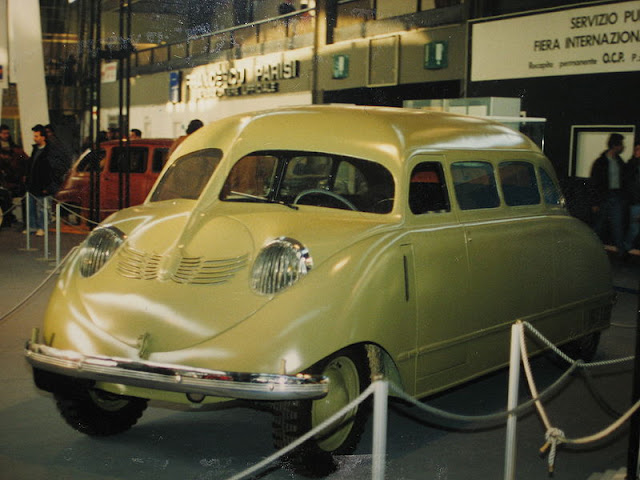
|
| Stout Scarab 1935 |
Specification :
Manufacturer : Stout
Production : 1935
Engine : rear-engine, Ford flathead V8, three-speed manual, transaxle transmission.
Additional Information : The Scarab was unlike other cars of the era. Virtually all production cars at the time used a separate chassis and body, with a long compartment in the front, housing the engine, longitudinally placed behind the front axle, and a rearward passenger compartment. The front-mounted engine would typically drive the rear axle through a connecting prop-shaft running underneath the floor of the vehicle. This layout worked very well, but had severe limitations where space utilization was concerned.
Source : http://en.wikipedia.org
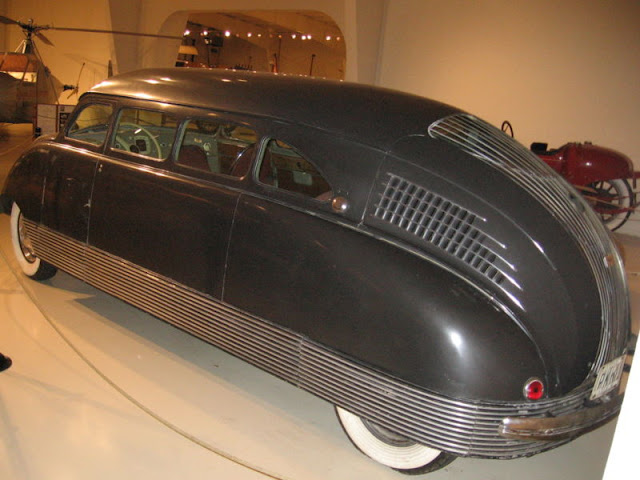
|
| Stout Scarab 1935 |
Toyota Cressida First Generation X30-X40 1978-1980
 Manufacturer : Toyota
Manufacturer : Toyota
 Productions : 1978-1980
Productions : 1978-1980
 Engine : 1.8 L 3T I4, 2.0 L 18RI4, 2.6 L 4M I6, 2.6 L 4M-E I6 EFI
Engine : 1.8 L 3T I4, 2.0 L 18RI4, 2.6 L 4M I6, 2.6 L 4M-E I6 EFI
 Transmission : automatic transmission and 5-speed manual
Transmission : automatic transmission and 5-speed manual
 Source : wikipedia.org
Source : wikipedia.org
The first generation Cressida (designated X30 series) was available as a sedan(X30, X32), estate wagon (X35, X36) or hardtop coupe (X30, X31). In Japan, it was sold as both the Toyota Mark II and the more upmarket Cressida.
Depending on the market it was sold in, it had the 4M carbureted engine (MX32, MX36), the 18R engine (RX30, RX32, RX35) or 3T engine (TX30). The North American models started with the carbureted 4M engine (MX32) but in mid 1978 the fuel injected 4M-E replaced its carbureted counterpart – this was one of the first Toyotas in the US to use fuel injection. In 1979, the MSRP in the US was US$9,190. In New Zealand, where it was locally assembled and sold in a highly specified GL form, it had the 18R engine.
Toyota Cressida First Generation X30-X40 1978-1980
Standard features included air conditioning, automatic transmission (a 5-speed manual was available), power steering, rear seat armrests, AM/FM cassette stereo with amplifier, reclining front seats, and a rear window defroster. The automatic transmission was a four speed overdrive with an overdrive lockout. Power windows were optional. Soundproofing was extensive, and the Cressida was famous for being one of the quietest cars on the road at the time.
1977 Toyota Cressida Coupe
In the United Kingdom, the Cressida was available in both sedan and wagon bodystyles. The only engine available was the 18R and there was one trim level, badged De Luxe. Contrary to popular belief, it was not the same as DX specifications on other Toyota cars, but a more upmarket version of the DX trim level. The Toyota Carina sedan and wagon also sold in the United Kingdom at this time were also badged as De Luxe (but rebadged as DX from 1980 onwards).
 Manufacturer : Honda
Manufacturer : Honda
 Productions : 1981
Productions : 1981
 Engine : Twin cylinder Air-cooled Four-stroke, Single Over Head Cam Parallel twin.
Engine : Twin cylinder Air-cooled Four-stroke, Single Over Head Cam Parallel twin.
 Transmission : -
Transmission : -
Honda introduced several 200 cm³ bikes with similar engines but different body variations in the 1980s. The model introduced in South Africa and Pakistan was known as the CD 200 “Road Master”. It was a detuned version of the Honda CD185 twin. The CD 200 sold more for its looks then performance as its square speedometer, huge front and rear mudguards, twin chrome exhausts, neatly tucked in choke behind handle bars and a chrome plated fuel tank with the Honda logo contributed to an interesting styling.
The bike was a cheap commuter vehicle with a claimed 100 miles (160 km) per gallon and a smooth ride. Too slow for a 200 cm³ bike, its top speed was only 70 mph (112 km/h) as the engine was detuned to keep maintenance cost to a minimum. This bike targeted users who wanted a comfortable cheap transport suitable for long routes with low maintenance. Use of simple drum breaks in rear and front and a single carburetor were other measures used to keep the maintenance low. The bike accelerated hard up to 65 mph (105 km/h); after that it was a flat ride. The engine had to be revved very hard to create any kind of excitement as the bike was too heavy (140 kg) for an engine that produced a modest 16 bhp.
This model suffered from various manufacturing faults like a noisy cam chain and an unreliable electrical starter (later models were upgraded with 12 volts CDI system in the UK.). In the UK the CD200 was affected by legislation restricting learner riders to bikes limited to 125 cm³ and 12bhp. Honda introduced a 125 cm³ Benly after the CD200 was withdrawn.The CD 200 Road Master was sold in South Africa until late 2004 and was used mainly as a courier/delivery bike.It retained the 6 volt electrics and points ignition.
October 14, 2010 – 4:45 am
Datsun 210 “Sakura” Specification :
Manufacturer : Datsun
Production : 1958
Overall length / width / height : 3,860/1,466/1,535mm
Wheelbase : 2,220mm
Curb weight : 925kg
Engine : Type C (4-cyl. in line, OHV)
EngineDisplacement : 988cc
EngineMax. power : 25kW (34PS)/4,400rpm
EngineMax. torque : 65Nm (6.6kgm)/2,400rpm
Gear ratios : 4.94, 3.01, 1.73, 1.0
Suspension : Leaf rigid (front & rear)
Brakes : Drum (front & rear)
Top speed : 95km/h
Together with the Fuji 210, Sakura entered the 1958 Around Australia rally (official name: Around Australia Mobilgas Trial) and came 4th in Class A (Car No. 14: Minawa/Oya). The newly developed OHV engine (nicknamed the Stone Engine) powering the 210 displayed extraordinary stamina. Both cars completed the harsh course, which virtually circumnavigates the entire continent, an extraordinary feat that will always be remembered.
source : www.performancecar.co.nz
September 27, 2010 – 3:56 pm
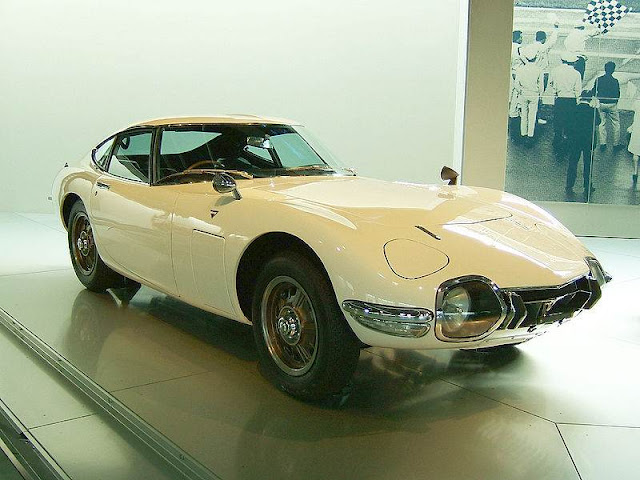 |
| Toyota 2000GT 1967-1970 |
Toyota 2000GT Specification :
Manufacturer : Toyota
Production : 1967–1970 (337 produced)
Class : Sports car
Body style(s) : 2-door coupe
Layout : FR layout
Engine(s) : 2.0 L 3M I6/ 2.3 L 2M I6
Transmission(s) : 5-speed manual / 3-speed automatic
Reviewing a pre-production car in 1967, Road & Track magazine summed up the 2000GT as “one of the most exciting and enjoyable cars we’ve driven”, and compared it favorably to the Porsche 911. Today, the car is seen as the first seriously collectible Japanese car, the first “Japanese Supercar”. Examples have sold for as much as $375,000 at auction.
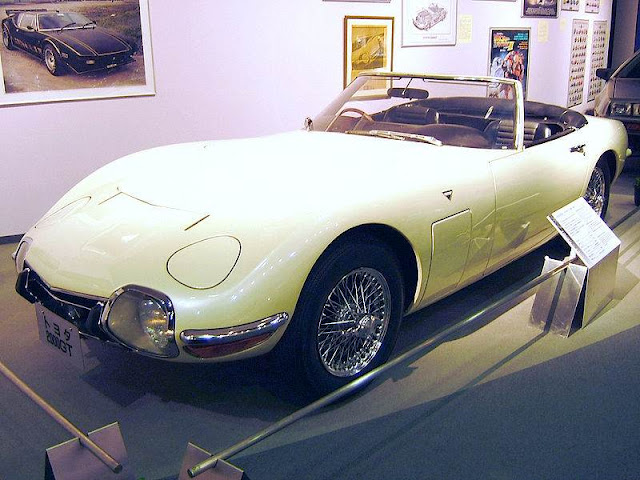 |
| Toyota 2000GT 1967-1970 |
 |
| Toyota 2000GT 1967-1970 |
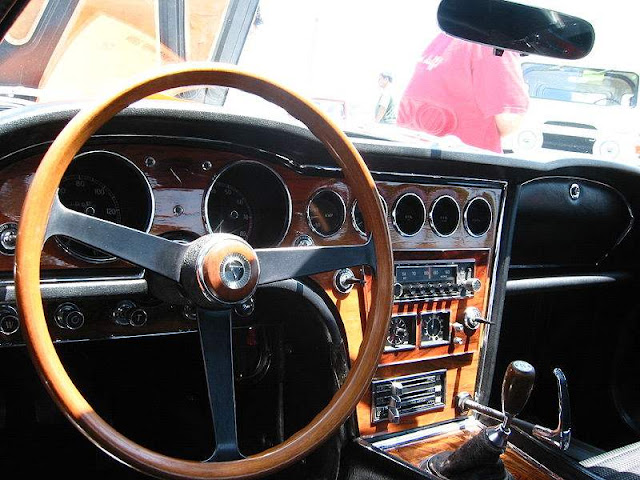 |
| Toyota 2000GT 1967-1970 |
Source : http://en.wikipedia.org
 Manufacturer : Honda
Manufacturer : Honda
 Productions : 1978-1979
Productions : 1978-1979
 Engine : 1751 cc SOHC CVCC I4
Engine : 1751 cc SOHC CVCC I4
 Transmission : 5-speed manual transmission, and 68 hp with a 2-speed automatic
Transmission : 5-speed manual transmission, and 68 hp with a 2-speed automatic
 Source : netcarshow.com
Source : netcarshow.com
The Honda Prelude was a front wheel drive I4-engined coupe that was manufactured by Honda between 1978 and 2001. It spanned five generations of cars but was discontinued upon the release of the fourth-generation Honda Integra in Japan in late 2001, due to its decreasing sales and popularity.
The Prelude’s perennial competitor has been the Toyota Celica, another I4-powered coupe introduced several years prior to the Prelude. Throughout the 1980s, it was challenged by the Nissan Silvia, Isuzu Impulse, Mitsubishi FTO, Mitsubishi Cordia (later the Eclipse), and the Mazda MX-6.
April 26, 2011 – 10:51 pm
Fiat 124 (1966-1974) Sedan
 Manufacturer : Fiat
Manufacturer : Fiat
 Productions : 1966-1974
Productions : 1966-1974
Class : Family car
 Engine : Engine 1.2 L 1197 cc ohv I4, 1.4 L 1438 cc ohv I4, 1.4 L 1438 cc dohc I4, 1.6 L 1592 cc dohc I4, 1.8 L 1756 cc dohc I4
Engine : Engine 1.2 L 1197 cc ohv I4, 1.4 L 1438 cc ohv I4, 1.4 L 1438 cc dohc I4, 1.6 L 1592 cc dohc I4, 1.8 L 1756 cc dohc I4
Body style : 4-door sedan and 5-door station wagon
Layout : FR layout
 Transmission : 4 speed manual read more »
Transmission : 4 speed manual read more »
![]() Manufacturer : Chrysler
Manufacturer : Chrysler![]() Productions : 1957
Productions : 1957![]() Engine : V8, 392 in³ (6.4 L) and 375 hp (280 kW)
Engine : V8, 392 in³ (6.4 L) and 375 hp (280 kW)![]() Source : netcarshow.com
Source : netcarshow.com














